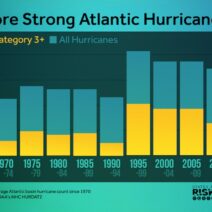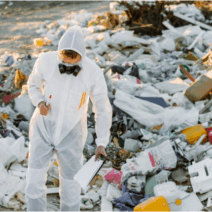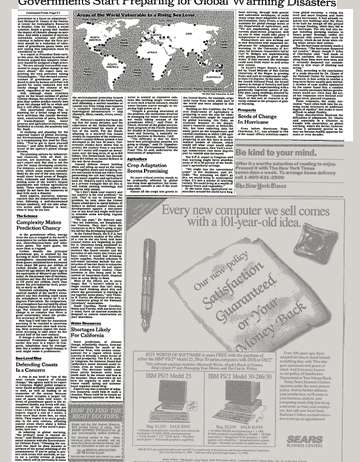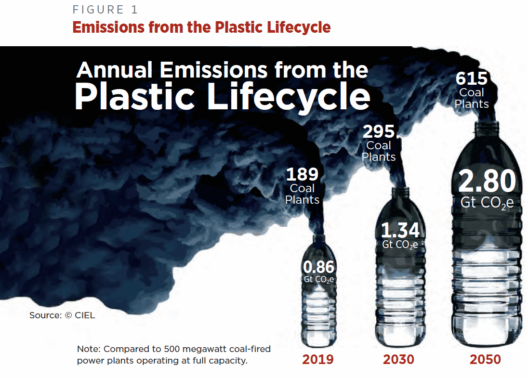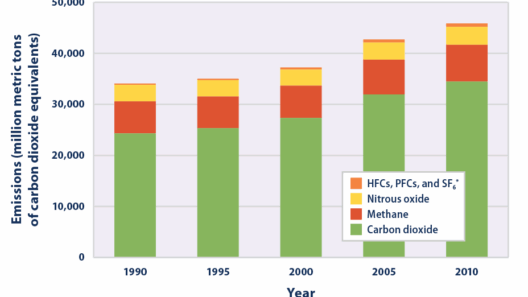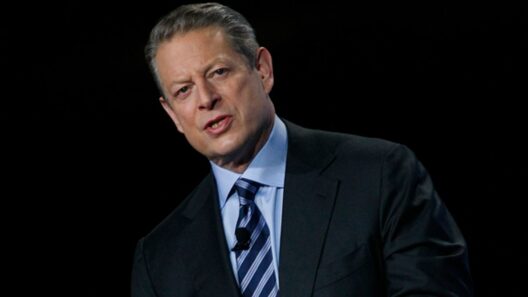In 1989, the United Nations convened a pivotal conference that would lay the groundwork for decades of climate science and policy development. This event marked a watershed moment in the global understanding of climate change, leading many to ponder whether the UN accurately predicted the phenomenon of global warming during that time. The implications of their findings resonate profoundly today amidst escalating climate disasters.
The 1989 conference, held in Geneva, focused primarily on the burgeoning recognition of climate change as an existential threat. This significant gathering of scientists, policymakers, and environmental advocates aimed to address the need for unified global action. In essence, the UN highlighted the imminent danger posed by anthropogenic climate change driven by fossil fuel consumption, deforestation, and industrial emissions.
One of the most notable declarations made at the conference was the recognition of the greenhouse effect, a natural phenomenon that had been exacerbated by human activities. The conversation underscored how certain gases, such as carbon dioxide, methane, and nitrous oxide, trap heat in the earth’s atmosphere, leading to a gradual increase in global temperatures. Scientific models at the time began to articulate scenarios detailing potential futures, including rising sea levels, altered weather patterns, and increased frequency of extreme weather events.
Despite the clarity and urgency of these early warnings, the trajectory of global climate policy has been fraught with obstacles. The pontification at the UN in 1989 came on the heels of a burgeoning environmental movement, but public acknowledgment of climate change lagged significantly. Advocacy groups were striving to galvanize action, yet political inertia prevailed. It was not until the later part of the 20th century that tangible actions would begin to materialize in response to the declarations made during that conference.
Throughout the early 1990s, we witnessed a burgeoning awareness of global warming among key stakeholders. In 1992, the UN Framework Convention on Climate Change (UNFCCC) was established in Rio de Janeiro, further cementing the organization’s commitment to mitigating climate impacts. The early analysis provided by scientists emphasized that inaction could lead to irreversible changes to the planet’s climate systems—a grim forecast that has since proven prescient.
Scholarly research conducted in subsequent years illuminated the nuance of climate science and highlighted the varied impacts of warming. For instance, studies indicated that polar regions would experience significant thawing, leading to rising sea levels that threaten coastal communities around the globe. Moreover, increased atmospheric temperatures would exacerbate droughts in some regions while engendering flooding in others. Such cascading consequences would inevitably usher in economic instability, food insecurity, and societal upheaval.
Fast-forward to the present day, and the predictions made at the UN in 1989 have manifested vividly. The scientific consensus around climate change has greatly expanded, drawing upon vast troves of data collected over decades. Institutions, including the Intergovernmental Panel on Climate Change (IPCC), have published comprehensive reports showcasing the irreversible trends in global temperatures and highlighting the dire need for immediate action to limit warming beneath 1.5 degrees Celsius.
The complexity of global warming requires an interdisciplinary approach to communication and mobilization. The readers seeking content on this topic can expect a wide variety of insights. Some may delve into scientific analyses, exploring the physical, biological, and ecological ramifications of climate change. Others may look for the socioeconomic implications, scrutinizing how vulnerable populations bear the brunt of climate impacts disproportionately. Articles may also feature interviews with climate activists who share their experiences and perspectives on fostering community resilience against climate adversity.
For those interested in policy reform, debates surrounding international agreements, such as the Paris Agreement and various COP discussions, will be salient. The evolution of these frameworks is a testament to the UN’s ability to adapt its strategies in response to the evolving scientific landscape and the urgent demands of the global populace.
Additionally, various pieces will explore technological innovations that offer hope amid despair. Readers can anticipate discussions surrounding renewable energy deployment, advancements in carbon capture technologies, and sustainable agricultural practices that promise to mitigate the impacts of climate change while promoting ecological preservation.
Another essential aspect is the role of youth and grassroots movements, epitomized by actions instigated by groups like Fridays for Future. These collective endeavors exemplify an emerging wave of activism that prioritizes climate education and community engagement. Through creative storytelling and captivating narratives, readers will glean insights into the motivations and aspirations of a generation poised to confront the challenges that lie ahead.
In summary, the UN’s foresight regarding global warming in 1989 served as a crucial precursor to the extensive discourse that continues today. As alarming climate realities unfold with each passing year, the urgency to address these issues becomes increasingly pressing. Future-oriented discussions must examine the convergence of science, policy, and societal readiness to respond comprehensively to the global crisis we now face. The path from initial predictions to present-day realities is fraught with both challenges and opportunities, but the dialogue must persist if humanity is to forge a sustainable future.

